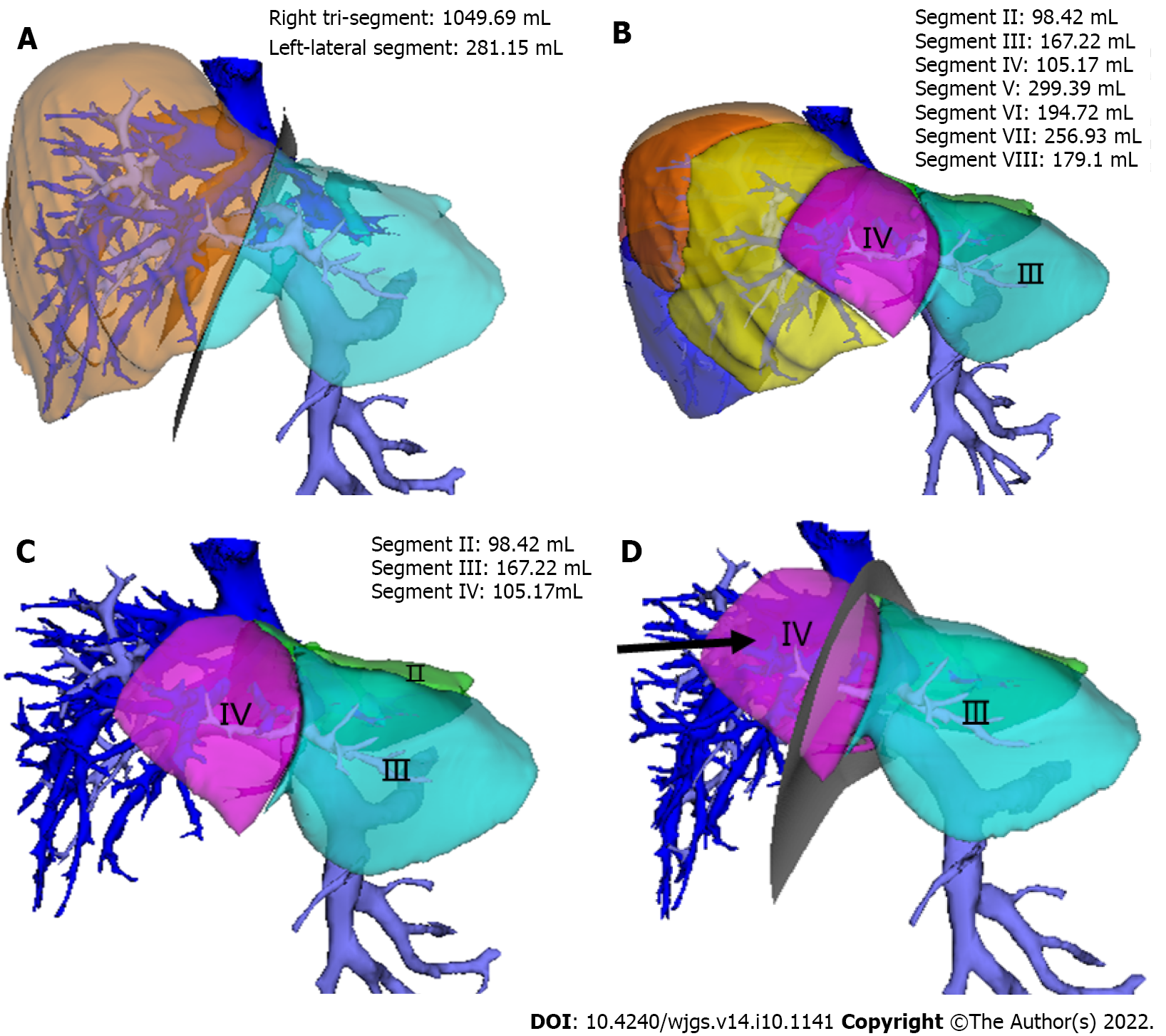Copyright
©The Author(s) 2022.
World J Gastrointest Surg. Oct 27, 2022; 14(10): 1141-1149
Published online Oct 27, 2022. doi: 10.4240/wjgs.v14.i10.1141
Published online Oct 27, 2022. doi: 10.4240/wjgs.v14.i10.1141
Figure 1 The range of hepatic ischemia was calculated by simulating the left-lateral segment and right tri-segment splitting.
A: The simulated operation based on Couinaud liver segmentation; B: The liver segments constructed via the topological structural relationship of portal vein blood flow; C: The calculated liver volume of the Ⅱ/Ⅲ/Ⅳ segments based on the blood flow topology liver segmentation method; D: The volume of ischemic range in the hepatic segment of the right tri-segment after split liver transplantation (black arrow).
Figure 2 Based on the Couinaud liver segmentation method, left-lateral segment and right tri-segment splits were performed.
During the operation, obvious ischemic changes in the cross-section of the right tri-segment were observed. A: The right tri-segment graft; B: The left-lateral segment graft; C: Cleaved right tri-segment with distinct ischemia in the hepatic segment after hepatic reflow (white arrow).
Figure 3 Left and right half-split liver transplantation was performed according to the portal vein blood flow topology liver segmentation method.
There was no ischemic change in the liver segment after reflow. A: Left and right half liver splitting were simulated based on the Couinaud liver segmentation method, while the middle hepatic vein was split in the middle; B: The simulation of left and right half liver splitting based on the portal vein blood flow topology liver segmentation method. It can be seen that a portion of segment V liver tissues (99.95 mL) is partitioned into the left liver (arrow); C: Surgery based on the portal vein blood flow topology liver segmentation method was implemented for left and right half liver splitting instead of the Couinaud liver segmentation method (red dotted line); D: No ischemic changes in the hepatic segment after reflow (white arrow).
- Citation: Zhao D, Zhang KJ, Fang TS, Yan X, Jin X, Liang ZM, Tang JX, Xie LJ. Topological approach of liver segmentation based on 3D visualization technology in surgical planning for split liver transplantation. World J Gastrointest Surg 2022; 14(10): 1141-1149
- URL: https://www.wjgnet.com/1948-9366/full/v14/i10/1141.htm
- DOI: https://dx.doi.org/10.4240/wjgs.v14.i10.1141











